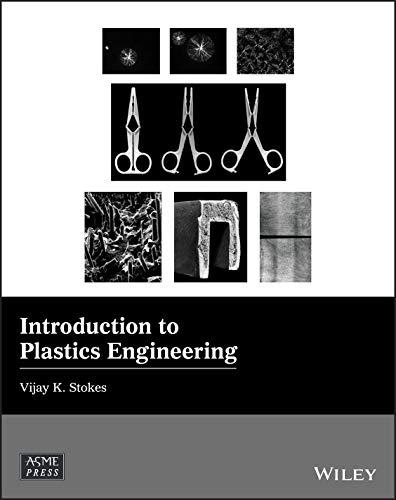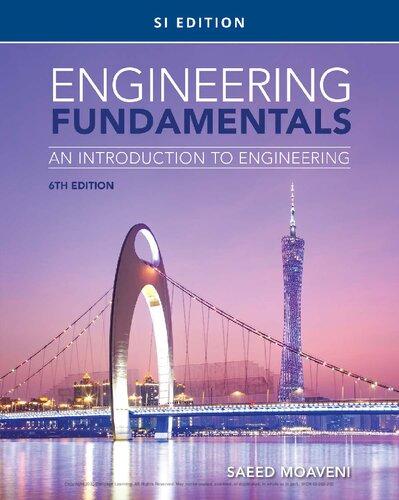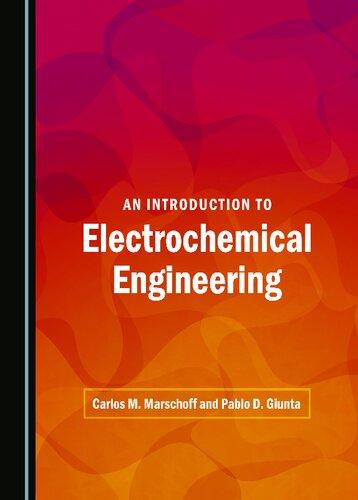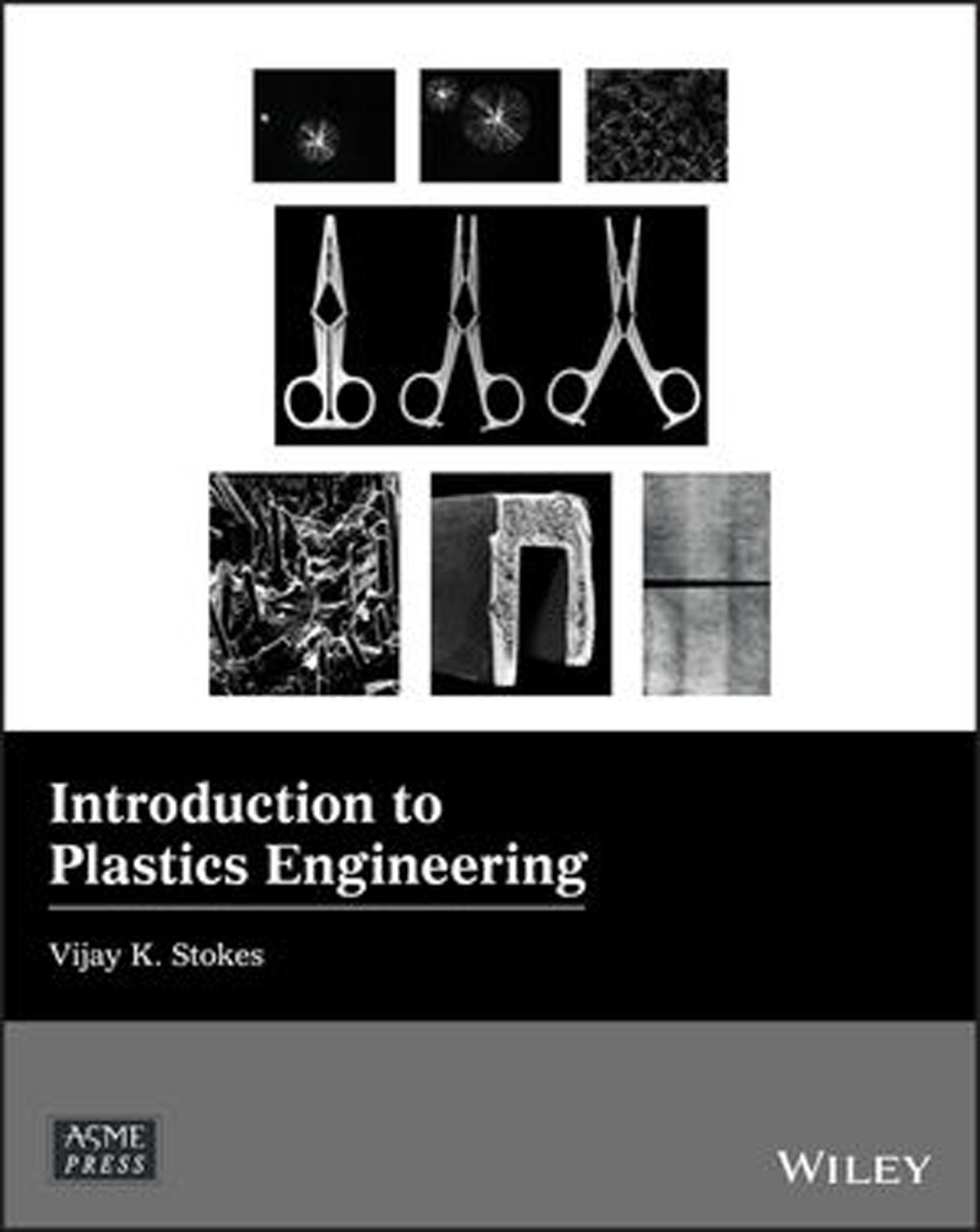IntroductiontoPlasticsEngineering
VijayK.Stokes
ThisWorkisaco-publicationbetweenJohnWiley&SonsLtdandASMEPress
Thiseditionfirstpublished2020
©2020JohnWiley&SonsLtd
ThisWorkisaco-publicationbetweenJohnWiley&SonsLtdandASMEPress
Allrightsreserved.Nopartofthispublicationmaybereproduced,storedinaretrievalsystem,ortransmitted,inanyformorby anymeans,electronic,mechanical,photocopying,recordingorotherwise,exceptaspermittedbylaw.Adviceonhowtoobtain permissiontoreusematerialfromthistitleisavailableathttp://www.wiley.com/go/permissions.
TherightofVijayK.Stokestobeidentifiedastheauthorofthisworkhasbeenassertedinaccordancewithlaw.
RegisteredOffices
JohnWiley&Sons,Inc.,111RiverStreet,Hoboken,NJ07030,USA
JohnWiley&SonsLtd,TheAtrium,SouthernGate,Chichester,WestSussex,PO198SQ,UK
EditorialOffice
TheAtrium,SouthernGate,Chichester,WestSussex,PO198SQ,UK
Fordetailsofourglobaleditorialoffices,customerservices,andmoreinformationaboutWileyproductsvisitusat www.wiley.com.
Wileyalsopublishesitsbooksinavarietyofelectronicformatsandbyprint-on-demand.Somecontentthatappearsinstandard printversionsofthisbookmaynotbeavailableinotherformats.
LimitofLiability/DisclaimerofWarranty
Whilethepublisherandauthorshaveusedtheirbesteffortsinpreparingthiswork,theymakenorepresentationsorwarranties withrespecttotheaccuracyorcompletenessofthecontentsofthisworkandspecificallydisclaimallwarranties,including withoutlimitationanyimpliedwarrantiesofmerchantabilityorfitnessforaparticularpurpose.Nowarrantymaybecreatedor extendedbysalesrepresentatives,writtensalesmaterialsorpromotionalstatementsforthiswork.Thefactthatanorganization, website,orproductisreferredtointhisworkasacitationand/orpotentialsourceoffurtherinformationdoesnotmeanthatthe publisherandauthorsendorsetheinformationorservicestheorganization,website,orproductmayprovideorrecommendations itmaymake.Thisworkissoldwiththeunderstandingthatthepublisherisnotengagedinrenderingprofessionalservices.The adviceandstrategiescontainedhereinmaynotbesuitableforyoursituation.Youshouldconsultwithaspecialistwhere appropriate.Further,readersshouldbeawarethatwebsiteslistedinthisworkmayhavechangedordisappearedbetweenwhen thisworkwaswrittenandwhenitisread.Neitherthepublishernorauthorsshallbeliableforanylossofprofitoranyother commercialdamages,includingbutnotlimitedtospecial,incidental,consequential,orotherdamages.
LibraryofCongressCataloging-in-PublicationData
Names:Stokes,VijayKumar,1939-author.
Title:Introductiontoplasticsengineering/VijayK.Stokes.
Othertitles:Plasticsengineering
Description:Firstedition.|Hoboken,NJ:Wiley,[2020]|Includes bibliographicalreferencesandindex.|
Identifiers:LCCN2018055488(print)|LCCN2019000594(ebook)|ISBN 9781119536543(AdobePDF)|ISBN9781119536529(ePub)|ISBN9781119536574 (hardcover)
Subjects:LCSH:Plastics.|Polymerengineering.
Classification:LCCTA455.P5(ebook)|LCCTA455.P5S7382019(print)|DDC 620.1/923--dc23
LCrecordavailableathttps://lccn.loc.gov/2018055488
CoverDesign:Wiley
CoverImage:(top)courtesyofProfessorJ.Oliveira,UniversityofMinho;(middle)courtesyVijayK.Stokes; (bottom)courtesySABIC
Setin10/12ptTimesLTStdbySPiGlobal,Chennai,India
PrintedintheUKbyBell&BainLtd,Glasgow. 10987654321
dui biE dOsha bOrsha ka ubi bakO sata dENiE tEi jO pothi apNi ThOldi prOba lE meri Zani ka ubi behTa.
This book is dedicated to my wife Prabha in recognition of over fifty years of loving support.
Contents
SeriesPreface xxix
Preface xxxi
PARTIINTRODUCTION 1
OutlinesforChapters1and2
1IntroductorySurvey 3
1.1Background 3
1.2SynergyBetweenMaterialsScienceandEngineering 4
1.3PlasticsEngineeringasaProcess(thePlasticsEngineeringProcess) 7
1.4TypesofPlastics 9
1.4.1PlasticComposites 9
1.4.2RecyclingofPlastics 10
1.5MaterialCharacteristicsDeterminePartShapes 11
1.5.1StoneasaBuildingMaterial 11
1.5.1.1TheEarlyUseofStone 11
1.5.1.2TheInventionoftheArch 14
1.5.1.3VaultsandDomes 14
1.5.1.4SummaryComments 19
1.5.2CastIronasaBuildingMaterial 19
1.5.3SteelasaBuildingMaterial 20
1.5.3.1SummaryComments 20
1.5.4ShapeSynthesisforPlasticParts 21
1.5.4.1PartComplexityandConsolidation 22
1.5.4.2PlasticHinges 24
1.5.4.3SummaryComments 27
1.6PartFabrication(PartProcessing) 27
1.7PartPerformance 28
1.7.1TheRoleofNumericalMethods 29
1.7.2RapidPrototyping 31
1.8Assembly 32
1.9ConcludingRemarks 33
2EvolvingApplicationsofPlastics 35
2.1Introduction 35
2.2ConsumerApplications 36
2.2.1Clothing 36
2.2.1.1ProtectiveClothingforFirefighters 36
2.2.1.2BulletproofClothing 37
2.2.1.3Hook-and-LoopFasteners 39
2.2.2Shoes 42
2.2.2.1AthleticShoes 42
2.2.2.2Firefighters’Boots 44
2.2.3Toothbrushes 46
2.2.4DisposableRazors 48
2.2.5Eyewear 49
2.2.6ContactLenses 51
2.2.7BottleCaps 51
2.2.8Drip-ProofSpouts 53
2.2.9PlasticTopsforPaperContainers 53
2.2.9.1PlasticTopsforCardboardSaltContainers 54
2.2.9.2PlasticTopsforPaperJuiceCartons 54
2.2.10Toys 56
2.2.11ConsumerAudio 57
2.2.11.1RecordingMedia 58
2.2.11.2AudioSystems 60
2.2.12VacuumCleaners 65
2.2.13SmallandMajorAppliances 65
2.3MedicalApplications 67
2.3.1DripBagsandAccessories 67
2.3.2Syringes 68
2.3.3MedicalImagingEquipment 69
2.3.4PlasticModelsforBodyParts 70
2.4AutomotiveApplications 70
2.4.1Bumpers 71
2.4.2Fenders 72
2.4.3ThrottleBodies 72
2.4.4ExhaustManifolds 73
2.4.5GasTanks 74
2.4.6DoorModules 75
2.4.7BootsforConstant-VelocityJoints 76
2.5InfrastructureApplications 77
2.5.1Glazing 77
2.5.2SecurityGlazing 78
2.5.3WaterManagementSystems 79
2.5.4Large-DiameterPiping 83
2.5.5PowerLinePoles 84
2.5.6Bridges 86
2.5.7CompositeSheetPiling 86
2.6WindEnergy 88
2.7AirlineApplications 90
2.8OilExtraction 91
2.9Mining 92
2.10ConcludingRemarks 93
PARTIIMECHANICS 95
OutlinesforChapters3through8
3IntroductiontoStressandDeformation 97
3.1Introduction 97
3.2SimpleMeasuresforLoadTransferandDeformation 97
3.3*StrainsasDisplacementGradients 99
3.4*CouplingBetweenNormalandShearStresses 101
3.5*CouplingBetweenNormalandShearStrains 102
3.6**Two-DimensionalStress 103
3.7ConcludingRemarks 105
4ModelsforSolidMaterials 107
4.1Introduction 107
4.2SimpleModelsfortheMechanicalBehaviorofSolids 107
4.3ElasticMaterials 108
4.4*AnisotropicMaterials 109
4.4.1*OrthotropicMaterials 109
4.5ThermoelasticEffects 111
4.6Plasticity 113
4.7ConcludingRemarks 116
5SimpleStructuralElements 119
5.1Introduction 119
5.2BendingofBeams 119
5.3DeflectionofPrismaticBeams 123
5.3.1DeflectionofaCantileverDuetoanEndLoad 123
5.3.2DeflectionofaSimplySupportedBeamDuetoaCentralLoad 124
5.3.3DeflectionofaSimplySupportedBeamDuetoaNoncentralLoad 125
5.4TorsionofThin-WalledCircularTubes 127
5.5TorsionofThinRectangularBarsandOpenSections 129
5.6TorsionofThin-WalledTubes 130
5.7*TorsionofMulticellularSections 131
5.8IntroductiontoElasticStability 133
5.8.1ConceptofStability 133
5.8.2StabilityofaHingedRigidBar 134
5.8.3*Spring-SupportedRigidBar:StabilityAbovetheCriticalLoad 136
5.9*ElasticStabilityofanAxiallyLoadedColumn 138
5.9.1BucklingLoadforaPin-JointedColumn 139
5.9.2BucklingofaColumnFixedatOneEnd 140
5.10Twist-BendBucklingofaCantilever 142
5.11StressConcentration 142
5.12TheRoleofNumericalMethods 145
5.13ConcludingRemarks 145
6ModelsforLiquids 147
6.1Introduction 147
6.2SimpleModelsforHeatConduction 147
6.2.1Steady-StateHeatConduction 148
6.2.2TransientHeatConduction 149
6.3KinematicsofFluidFlow 149
6.3.1MeasuresforDeformationRates 150
6.4EquationsGoverningOne-DimensionalFluidFlow 151
6.4.1One-DimensionalContinuityEquation 152
6.4.2BalanceofLinearMomentuminOneDimension 153
6.4.3*EnergyBalanceinOneDimension 154
6.5SimpleModelsfortheMechanicalBehaviorofLiquids 157
6.5.1NewtonianLiquids 157
6.5.2Non-NewtonianLiquids 157
6.5.3Temperature-DependentViscosityModels 158
6.6SimpleOne-DimensionalFlows 159
6.6.1Surface-DrivenOne-DimensionalSteadyFlow 159
6.6.2HeatGenerationinOne-DimensionalCouetteFlow 160
6.6.3*One-DimensionalCouetteFlowwithTemperature-DependentViscosity 161
6.6.3.1LinearVariationofViscositywithTemperature 161
6.6.4*DevelopmentofCouetteFlow 162
6.6.5Pressure-DrivenOne-DimensionalSteadyFlow 162
6.6.6Pressure-DrivenRadialFlow 164
6.6.6.1ContinuityEquationforRadialFlow 165
6.6.6.2BalanceofLinearMomentuminRadialFlow 166
6.6.6.3IncompressibleNewtonianRadialFlow 168
6.7PolymerRheology 171
6.7.1DieSwell 171
6.7.2TubelessSiphon 172
6.7.3VibrationofaBallDroppedinaLiquid 172
6.7.4WeissenbergEffect 173
6.8ConcludingRemarks 173
7LinearViscoelasticity 175
7.1Introduction 175
7.2PhenomenologyofViscoelasticity 176
7.2.1StressRelaxation 176
7.2.2Creep 176
7.3LinearViscoelasticity 179
7.3.1ConstitutiveEquations 180
7.3.2Stress-RelaxationIntegralForm 181
7.3.3CreepIntegralForm 181
7.3.4*RelationshipBetweentheRelaxationModulusandtheCreepCompliance 181
7.4SimpleModelsforStressRelaxationandCreep 182
7.4.1ContinuumElasticElement(ElasticSpring) 183
7.4.2ContinuumViscousElement(Dashpot) 183
7.4.3MaxwellModel 184
7.4.3.1StressRelaxation 185
7.4.3.2Creep 185
7.4.4Kelvin-VoigtModel 185
7.4.4.1StressRelaxation 186
7.4.4.2Creep 187
7.4.5StandardThree-ParameterModel 187
7.5ResponseforConstantStrainRates 189
7.5.1MaxwellModel 189
7.5.2Kelvin–VoigtModel 190
7.5.3StandardThree-ParameterModel 190
7.6*SinusoidalShearing 190
7.6.1DynamicMechanicalAnalysis(DMA) 191
7.6.1.1DMACurvesforThree-ParameterModel 192
7.6.2*EnergyStorageandLoss 192
7.7IsothermalTemperatureEffects 193
7.7.1ThermorheologicallySimpleMaterials 194
7.7.2PhysicalInterpretationforTime-TemperatureShift 195
7.8*VariableTemperatureHistories 195
7.9*CoolingofaConstrainedBar 196
7.10ConcludingRemarks 196
8StiffeningMechanisms 199
8.1Introduction 199
8.2ContinuousFiberReinforcement 199
8.2.1Fiber-MatrixInterphase 202
8.3DiscontinuousFiberReinforcement 203
8.3.1LoadTransferinaDiscontinuousFiber 203
8.3.2DiscontinuousFiberComposite 208
8.3.3ReinforcingFillers 209
8.3.3.1SphericalFillers 209
8.3.3.2CylindricalFillers 210
8.4TheHalpin–TsaiEquations 211
8.5ReinforcingMaterials 211
8.5.1ContinuousFibers 211
8.5.2ChoppedFibers 212
8.5.3Flakes 212
8.5.4Particulates 212
8.5.5RubberToughening 212
8.6ConcludingRemarks 213
FurtherReading 213
PARTIIIMATERIALS 215
OutlinesforChapters9through15
9IntroductiontoPolymers 217
9.1Introduction 217
9.2Thermoplastics 217
9.2.1Polyethylene 217
9.2.1.1LinearPolyethylene 218
9.2.1.2BranchedPolyethylene 220
9.2.2Polypropylene 221
9.2.2.1Tacticity 221
9.2.3 Cis and Trans Isomers 223
9.2.4Polyisoprene 223
9.2.5HomopolymersandCopolymers 224
9.2.6ChainEntanglement 226
9.3MolecularWeightDistributions 226
9.4Thermosets 227
9.4.1Phenolics 227
9.4.2Elastomers 227
9.5ConcludingRemarks 227
10ConceptsfromPolymerPhysics 229
10.1Introduction 229
10.2ChainConformations 229
10.2.1*FreelyJointedChainModels 230
10.2.2*EffectofBondAngleRestriction 231
10.2.3*EffectofStericRestrictions 232
10.3AmorphousPolymers 234
10.3.1PhenomenologyoftheGlassTransition 234
10.3.2PhysicalAging 236
10.3.3ConceptofFreeVolume 236
10.3.4EffectofPressureonGlassTransition 238
10.3.5EffectofChemicalStructureonGlassTransition 239
10.3.6EffectofMolecularWeightonGlassTransition 240
10.4SemicrystallinePolymers 240
10.4.1StructureofPolymerCrystals 240
10.4.2MeltingPhenomenologyofSemicrystallinePolymers 242
10.4.3DegreeofCrystallinity 242
10.5LiquidCrystalPolymers 243
10.5.1LiquidCrystalPhasesandTransitions 244
10.5.2PolymerLiquidCrystals 245
10.6ConcludingRemarks 245
11Structure,Properties,andApplicationsofPlastics 247
11.1Introduction 247
11.2ResinGrades 248
11.3AdditivesandModifiers 248
11.3.1Stabilizers 248
11.3.1.1UVStabilizers 249
11.3.1.2Antioxidants 249
11.3.1.3ThermalStabilizers 249
11.3.1.4FireRetardants 249
11.3.2Modifiers 250
11.3.2.1Colorants 250
11.3.2.2Fillers 250
11.3.2.3ReinforcingFibers 250
11.3.2.4ImpactModifiers 251
11.3.2.5Lubricants 251
11.3.2.6Plasticizers 251
11.4Polyolefins 251
11.4.1Polyethylene 251
11.4.1.1High-StrengthPolyethyleneFibers 253
11.4.2Polypropylene 253
11.4.3Polybutylene 254
11.5VinylPolymers 254
11.5.1Poly(VinylChloride) 254
11.5.1.1Plastisol 255
11.5.2Polyacrylonitrile 255
11.5.3Polystyrene 256
11.5.3.1Poly(Styrene-co-Acrylonitrile)(SAN) 256
11.5.3.2Poly(Styrene-co-MaleicAnhydride)(SMA) 257
11.5.4Poly(MethylMethacrylate) 257
11.5.5Poly(Ethylene-co-VinylAlcohol) 257
11.6High-PerformancePolymers 258
11.6.1Polyoxymethylene 258
11.6.2Poly(PhenyleneOxide) 259
11.6.3Polyesters 259
11.6.4Polycarbonate 260
11.6.5Polyamides 261
11.6.5.1SemicrystallinePolyamides 261
11.6.5.2AmorphousPolyamides 262
11.6.6Fluoropolymers 263
11.6.6.1CopolymersofFluoropolymers 264
11.7High-TemperaturePolymers 265
11.7.1Poly(PhenyleneSulfide) 265
11.7.2Polyetherimide 266
11.7.3Poly(Amide-Imide) 266
11.7.4Polysulfones 267
11.7.4.1Polysulfone 267
11.7.4.2Polyethersulfone 268
11.7.4.3Polyphenylsulfone(Polyarylethersulfone) 268
11.7.5Polyketones 268
11.7.6LiquidCrystallinePolyesters 269
11.7.7AromaticPolyamides(Aramids) 270
11.7.8Polybenzimidazole 271
11.8CyclicPolymers 271
11.9ThermoplasticElastomers 272
11.9.1Polypropylene-EPDMTPE 272
11.9.2ThermoplasticCopolyesterTPE 272
11.9.3ThermoplasticUrethane(TPU) 273
11.10HistoricalNotes 273
11.11ConcludingRemarks 274
12BlendsandAlloys 277
12.1Introduction 277
12.2Blends 278
12.2.1Acrylonitrile-Butadiene-Styrene 278
12.2.2Acrylonitrile-Styrene-Acrylate 279
12.2.3ABS/PVCBlends 279
12.2.4Nylon/ABSBlends 279
12.2.5Polycarbonate/ABSBlends 279
12.2.6Poly(PhenyleneOxide)/PolystyreneBlends 280
12.2.7Polycarbonate/PBTBlends 280
12.2.8Nylon/PPOBlends 281
12.2.9High-TemperatureBlends 281
12.3HistoricalNotes 282
12.4ConcludingRemarks 282
13ThermosetMaterials 285
13.1Introduction 285
13.2ThermosettingResins 285
13.2.1Phenolics 286
13.2.1.1ResoleResins 287
13.2.1.2NovolakResins 287
13.2.1.3ApplicationsofPhenolics 288
13.2.2Urea-Aldehyde-BasedResins 288
13.2.2.1Urea-Formaldehyde-BasedResin 288
13.2.2.2Melamine-Aldehyde-BasedResins 289
13.2.2.3ApplicationsofUrea-andMelamine-AldehydeResins 291
13.2.3AllylDiglycolCarbonate(CR-39) 291
13.2.4ThermosettingPolyesters 291
13.2.5VinylEsters 293
13.2.5.1ApplicationsofPolyestersandVinylEsters 293
13.2.6Epoxies 293
13.2.6.1ApplicationsofEpoxies 294
13.2.7SheetandBulkMoldingCompounds 294
13.2.8Polyurethanes 295
13.2.8.1ApplicationsofPolyurethanes 296
13.3High-TemperatureThermosets 296
13.3.1CyanateEsters 296
13.3.2Bismaleimides 300
13.3.3Polyimides 302
13.3.3.1PMR-15 302
13.3.3.2LaRCRP-46 303
13.3.4Poly(PhenyleneBenzobisoxazole) 303
13.4ThermosetElastomers 304
13.4.1DieneElastomers 304
13.4.1.1Polyisoprene(NaturalRubber) 304
13.4.1.2Polychloroprene(Neoprene) 305
13.4.1.3Polybutadiene 306
13.4.1.4Poly(Isobutylene-co-Isoprene)(ButylRubber) 306
13.4.1.5Poly(Styrene-co-Butadiene)(SBRRubber) 307
13.4.1.6Poly(Acrylonitrile-co-Butadiene)(NBRRubber) 307
13.4.2Ethylene-PropyleneCopolymer-BasedElastomers 308
13.4.2.1Ethylene-PropyleneRubber(EPR) 308
13.4.2.2Ethylene-Propylene-DieneMonomer(EPDM)Rubber 308
13.4.2.3SiliconeElastomers 308
13.5HistoricalNotes 309
13.6ConcludingRemarks 311
14PolymerViscoelasticity 313
14.1Introduction 313
14.2PhenomenologyofPolymerViscoelasticity 313
14.2.1RelaxationModuliatConstantTemperature 314
14.2.2RelaxationModuliatConstantTime 315
14.2.3RelaxationModuliofSeveralResins 316
14.2.3.1EffectofMolecularWeight:RelaxationModuliofPolystyrene 316
14.2.3.2EffectsofCrystallinity:RelaxationModuliofSeveralResins 317
14.2.3.3EffectsofPlasticizers:RelaxationModuliofPVC 318
14.3Time-TemperatureSuperposition 319
14.3.1ExperimentalCharacterizationoftheMasterCurve 319
14.3.2CorrectionstotheTime-TemperatureCorrespondenceRelations 321
14.3.3TheWLFEquation 322
14.3.4PhysicalInterpretationfortheTime-TemperatureShift 322
14.3.5Summary 322
14.4SinusoidalOscillatoryTests 323
14.4.1DMADataforHigh-PerformanceThermoplastics 324 14.5ConcludingRemarks 328
15MechanicalBehaviorofPlastics 331
15.1Introduction 331
15.2DeformationPhenomenologyofPolycarbonate 332
15.2.1Constant-Displacement-RateTensileTest 333
15.2.2*ConsidèreTreatmentofYield 336
15.2.3*UniaxialExtensionofWidePCSpecimens 338
15.2.4*DefinitionandMeasurementofInitialYielding 341
15.2.5*MechanicalBehaviorofNeckedPC 342
15.2.6*CompositeStress-StretchCurveforPC 343
15.2.7*CreepofPCatHighLoads 343
15.2.8*Deformation-RateandTemperatureEffects 346
15.2.9*BiaxialStretchingofClampedCircularPCSheetsbyFluidPressure 349
15.2.10ThermallyInducedRecoveryfromaMechanicallyYieldedState 355
15.2.11Large-DeformationApplications 358
15.3TensileCharacteristicsofPEI 360
15.3.1Constant-Displacement-RateTensileTest 360
15.3.2*Deformation-RateandTemperatureEffects 362
15.4DeformationPhenomenologyofPBT 363
15.4.1Constant-Displacement-RateTensileTest 363
15.4.2*DefinitionandMeasurementofInitialYieldinginPBT 364
15.4.3*MechanicalBehaviorofNeckedPBT 366
15.4.4*CompositeStress-StretchCurveforPBT 367
15.4.5*Deformation-RateandTemperatureEffects 368
15.4.6*Post-YieldBehaviorPriortoNecking 371
15.4.7*LoadHistoryandFinalPermanentDeformation 372
15.4.8Large-DeformationApplications 375
15.5Stress-DeformationBehaviorofSeveralPlastics 376
15.5.1Thermoplastics 376
15.5.2Thermosets 380
15.5.3ThermoplasticElastomers 383
15.6PhenomenonofCrazing 387
15.7*MultiaxialYield 393
15.7.1MaximumPrincipalStressTheory 394
15.7.2MaximumShearStressTheory 394
15.7.3MaximumPrincipleStrainTheory 396
15.7.4StrainEnergyofDistortionTheory 396
15.7.5ComparisonofFailureTheories 399
15.7.6FailureTheoriesforPlastics 400
15.8*Fracture 401
15.9Fatigue 403
15.9.1TheS-NCurve 404
15.9.2*Fatigue-CrackPropagation 406
15.9.3TheRoleofHystereticHeating 412
15.10ImpactLoading 412
15.10.1InstrumentedImpactTest 412
15.10.2Ductile-BrittleTransition 414
15.11Creep 419
15.12Stress-DeformationBehaviorofThermosetElastomers 419
15.13ConcludingRemarks 420
FurtherReading 420
PARTIVPARTPROCESSINGANDASSEMBLY 421 OutlinesforChapters16through21
16ClassificationofPartShapingMethods 423
16.1Introduction 423
16.2PartFabrication(Processing)MethodsforThermoplastics 424
16.2.1ProcessesUsingDouble-SidedMolds 426
16.2.2ProcessesUsingSingle-SidedMolds 426
16.3EvolutionofPartShapingMethods 429
16.4EffectsofProcessingonPartPerformance 431
16.5BulkProcessingMethodsforThermoplastics 439
16.5.1FiberSpinning 439
16.5.2FilmBlowing 439
16.5.3SheetExtrusion 439
16.5.4ProfileExtrusion 439
16.6PartProcessingMethodsforThermosets 440
16.6.1ProcessesUsingDouble-SidedMolds 440
16.6.1.1ProcessesUsingPowderResin 441
16.6.1.2ProcessesUsingSheetandBulkMoldingCompounds 442
16.6.1.3ProcessesUsingLiquidResin 442
16.6.2ProcessesUsingSingle-SidedMolds 442
16.7PartProcessingMethodsAdvancedComposites 442
16.7.1Pultrusion 442
16.7.2FilamentWinding 442
16.7.3LaminatedComposites 443
16.7.3.1Prepregs 443
16.7.3.2VacuumBagConsolidation 443
16.7.3.3CompressionMolding 443
16.8ProcessingMethodsforRubberParts 443
16.8.1RubberCompounding 443
16.8.2DryRubberCompounding 444
16.8.2.1MoldingProcesses 444
16.8.2.2Extrusion 444
16.8.2.3Calendering 444
16.8.2.4ReinforcedandCoatedRubberSheet 444
16.8.3WetRubberPartFabrication 444
16.8.3.1DipMolding 444
16.8.3.2DipCoating 444
16.9ConcludingRemarks 445
17InjectionMoldingandItsVariants 447
17.1Introduction 447
17.2ProcessElements 447
17.2.1MoldFilling 453
17.2.1.1FillingofanOff-CenterGatedMoldCavity 453
17.2.1.2FillingofaDouble-GatedCavity 453
17.2.1.3EffectsofMaterialDifferencesonFlowinaDouble-GatedCavity 454
17.2.1.4EffectsofSlitsinaMoldCavity 455
17.2.1.5FlowinaDouble-GatedCavitywithInserts 457
17.2.2PartThickness 458
17.2.3MoldClampForces 460
17.2.4MoldCooling 460
17.3FountainFlow 462
17.3.1MeldSurfacesandKnitLines 465
17.3.1.1Head-onWeldingofTwoFlowFronts 465
17.3.1.2MeldingofFlowFrontsAroundaPin 467
17.3.1.3EffectsofGates,PartGeometries,andMaterialsonKnitLines 469
17.3.2TheRoleofNumericalSimulation 472
17.4PartMorphology 473
17.5PartDesign 475
17.5.1PartStiffeningMechanisms 475
17.5.2Molding-DrivenFeatures 476
17.5.2.1PartThicknessDistribution 476
17.5.2.2PartShrinkage 478
17.5.2.3PartWarpage 480
17.5.2.4DraftAngles 482
17.5.2.5BossGeometries 482
17.5.2.6Molded-InInserts 484
17.5.3PlasticHinges 485
17.6Large-VersusSmall-PartMolding 493
17.6.1Thin-WallMolding 493
17.6.2Micromolding 496
17.7MoldingPractice 504
17.7.1Two-PlateCold-RunnerMold 505
17.7.2Three-PlateCold-RunnerMold 508
17.7.3MoldsforPartswithUndercuts 508
17.7.4MoldswithCollapsibleCores 508
17.7.5Hot-RunnerMolds 513
17.7.6Sprues,Runners,andGates 515
17.7.6.1RunnerConfigurations 515
17.7.6.2ImbalancesfromFlowAsymmetry 518
17.7.7GateTypes 520
17.7.7.1SprueGate 521
17.7.7.2EdgeGate 521
17.7.7.3FanGate 521
17.7.7.4DiaphragmGate 522
17.7.8Jetting 522
17.7.9MoldVenting 523
17.7.10MoldCooling 525
17.7.11SummaryComments 525
17.8VariantsofInjectionMolding 526
17.8.1MethodsforReducingInjectionPressure 526
17.8.1.1SequentialGating 526
17.8.1.2Injection-CompressionMolding 527
17.8.2StructuralFoamMolding 529
17.8.2.1AlternativeFoamMoldingProcesses 533
17.8.2.2Advantages,Disadvantages,andApplications 534
17.8.3MicrocellularFoamMolding 535
17.8.4MultimaterialMolding 538
17.8.4.1CoinjectionMolding 538
17.8.4.2Overmolding 538
17.8.5HollowParts 540
17.8.5.1Fusible-CoreMolding 540
17.8.5.2Gas-AssistedInjectionMolding 541
17.8.5.3SummaryComments 548
17.8.6KnitandMeldLineEstheticsandIntegrity 549
17.8.6.1Multiple-Live-FeedInjectionMolding 549
17.8.6.2Push-PullInjectionMolding 550
17.8.7In-MoldDecorationandLamination 552
17.9ConcludingRemarks 553
References 553
18DimensionalStabilityandResidualStresses 555
18.1Introduction 555
18.2ProblemComplexity 556
18.3ShrinkagePhenomenology 556
18.4Pressure-TemperatureVolumetricData 563
18.4.1QuantificationofPVTData 564
18.5SimpleModelforHowProcessingAffectsShrinkage 567
18.5.1ConstantPacking-PressureHistory 569
18.5.2EffectofGateFreeze-Off 572
18.5.3EffectofPackingDuration 576
18.5.4SummaryComments 577
18.6*SolidificationofaMoltenLayer 578
18.6.1*FreezingofaMoltenLayer 578
18.6.2*FluidtoElastic-SolidFreezingModel 579
18.6.3*NumericalExamplefora3-mm-ThickPlaque 581
18.6.4*EffectivePressureasanIndependentVariable 583
18.6.5*SummaryComments 585
18.7**ViscoelasticSolidificationModel 585
18.7.1ViscoelasticMaterialModel 585
18.7.2TemperatureDistributioninaSolidifyingMelt 586
18.7.3EvolutionofShrinkageandResidualStresses 588
18.7.4EffectsofPacking-PressureLevel 590
18.7.5EffectofPacking-PressureDuration 593
18.7.6EffectofGateFreeze-OffTime 594
18.7.7SummaryComments 599
18.8**WarpageInducedbyDifferentialMold-SurfaceTemperatures 602
18.8.1TemperatureDistributioninaSolidifyingMelt 602
18.8.2ConstantPacking-PressureLevel 602
18.8.3EffectofPacking-PressureLevel 604
18.8.4EffectofGateFreeze-Off 605
18.8.5SummaryComments 606
18.9ConcludingRemarks 609
19AlternativestoInjectionMolding 615
19.1Introduction 615
19.2Extrusion 615
19.2.1FiberSpinning 616
19.2.2FilmBlowing 618
19.2.3SheetExtrusion 618
19.2.3.1CastFilmExtrusion 619
19.2.3.2CalenderedSheetExtrusion 620
19.2.4ProfileExtrusion 620
19.2.4.1OpenProfiles 621
19.2.4.2ClosedProfiles 624
19.2.5Coating 626
19.3BlowMolding 627
19.3.1ExtrusionBlowMolding 627
19.3.1.1ParisonProgramming 629
19.3.1.2Deep-DrawBlowMolding 631
19.3.1.3FlashlessBlowMoldingofTubularParts 633
19.3.1.4MultilayerExtrusionBlowMolding 634
19.3.1.5BlowMoldingwithEncasedModules 637
19.3.2InjectionBlowMolding 640
19.3.3PartStiffening 642
19.3.4SummaryComments 642
19.4RotationalMolding 643
19.4.1Rock-and-RollRotationalMolding 650
19.4.2AdvantagesandLimitations 651
19.4.3PartMorphology 654
19.4.4PartDesign 655
19.4.4.1ApproachestoPartStiffening 655
19.5Thermoforming 659
19.5.1VacuumForming 659
19.5.2PressureForming 662
19.5.3Plug-AssistedThermoforming 662
19.5.4Twin-SheetForming 665
19.5.5AdvantagesandLimitations 667
19.5.6PartStiffening 667
19.5.7MechanicalForming 668
19.6ExpandedBeadandExtrudedFoam 669
19.6.1ExpandedBeadFoamMolding 669
19.6.2ExtrudedFoam 670
19.73DPrinting 670
19.8ConcludingRemarks 672
20FabricationMethodsforThermosets 675
20.1Introduction 675
20.2GelPointandCuring 675
20.2.1ShelfLifeofPrecursors 678
20.3CompressionMolding 678
20.3.1CompressionMoldingofThermoplastics 680
20.4TransferMolding 681
20.5InjectionMolding 681
20.5.1Injection-CompressionMolding 683
20.6ReactionInjectionMolding(RIM) 683
20.6.1ReinforcedReactionInjectionMolding(RRIM) 684
20.6.2StructuralReactionInjectionMolding(SRIM) 685
20.7OpenMoldForming 685
20.8FabricationofAdvancedComposites 686
20.8.1Pultrusion 687
20.8.2FilamentWinding 688
20.8.3LaminatedComposites 692
20.8.3.1Prepregs 693
20.8.3.2VacuumBagConsolidation 693
20.8.3.3CompressionMolding 693
20.8.3.4PressureBagMolding 693
20.8.3.5Liquid-ResinTransferMolding 694
20.8.3.6SandwichStructureswithPrepregSkins 697
20.9FabricationofRubberParts 698
20.9.1RubberCompounding 699
20.9.2DryRubberPartFabrication 699
20.9.2.1MoldingProcesses 699
20.9.2.2Extrusion 699
20.9.2.3Calendering 700
20.9.2.4ReinforcedandCoatedRubberSheet 700
20.9.3WetRubberPartFabrication 700
20.9.3.1DipMolding 701
20.9.3.2DipCoating 703
20.9.4ManufactureofReinforcedRubberParts 703
20.9.4.1Tires 703
20.9.4.2ConveyorBelts 708
20.9.4.3PressureHoses 708
20.10ConcludingRemarks 708
21JoiningofPlastics 711
21.1Introduction 711
21.2ClassificationofJoiningMethods 712
21.3MechanicalFastening 713
21.3.1SnapFits 713
21.3.2UseofScrews 715
21.4AdhesiveBonding 721
21.4.1SolventBonding 722
21.5Welding 722
21.6ThermalBonding 723
21.6.1Hot-GasWelding 723
21.6.2ExtrusionWelding 723
21.6.3Hot-Tool(Hot-Plate)Welding 723
21.6.3.1WeldMorphology 729
21.6.3.2WeldStrength 732
21.6.4InfraredWelding 737
21.6.5LaserWelding 738
21.7FrictionWelding 741
21.7.1SpinWelding 742
21.7.2VibrationWelding 742
21.7.2.1WeldMorphology 746
21.7.2.2WeldStrength 749
21.7.3OrbitalWelding 753
21.7.4UltrasonicWelding 753
21.7.4.1UltrasonicStaking,SpotWelding,Swaging,Insertion,and Embedding 756
21.8ElectromagneticBonding 762
21.8.1Resistance(Implant)Welding 762
21.8.2InductionWelding 763
21.8.3DielectricWelding 770
21.9ConcludingRemarks 770
PARTVMATERIALSYSTEMS 771
OutlinesforChapters22through25
22Fiber-FilledMaterialMaterials–MaterialswithMicrostructure 773
22.1Introduction 773
22.2FiberTypes 773
22.3ProcessingIssues 774
22.4MaterialComplexity 774
22.5TensileandFlexuralModuli 780
22.5.1HomogeneousBarinTensionandBending 780
22.5.2NonhomogeneousBarinTension 781
22.5.3BendingofNonhomogeneousBarintheLowerStiffnessMode 781
22.5.4BendingofNonhomogeneousBarintheHigherStiffnessMode 783
22.6Short-Fiber-FilledSystems 784
22.6.1TensileModulus 785
22.6.1.1TestProcedures 785
22.6.1.2DirectionalandSpatialModulusVariation 787
22.6.1.3RepeatabilityofModulusData 790
22.6.1.4EffectsofPlaqueThicknessontheTensileModulus 791
22.6.1.5EffectsofInjectionSpeedontheTensileModulus 799
22.6.2TensileandFlexuralStrength 801
22.6.2.1TestProcedures 803
22.6.2.2DirectionalTensileandFlexuralStrengths 805
22.6.2.3VariationsinTensileandFlexuralStrengths 808
22.6.3EffectsofFiberAspectRatio 812
22.6.4EffectsofMatrixResin 813
22.6.5SummaryofMechanicalCharacteristicsofShort-FiberSystems 815
22.7Long-FiberFilledSystems 817
22.7.1TensileModulus 819
22.7.1.1TestProcedures 819
22.7.1.2TensileandFlexuralTests 820
22.7.1.3StrengthVariationStudy 822
22.7.1.4In-PlaneTensileModulusVariations 822
22.7.2SpatialandDirectionalVariationsoftheTensileModulus 826
22.7.3FlowandCross-FlowMechanicalPropertiesofInjection-MoldedPlaques 828
22.7.4VariationsinStrength 831
22.7.5MechanicalPropertiesforDesign 832
22.8*FiberOrientation 833
22.8.1*OrientationofaSingleFiber 833
22.8.2*FiberOrientationDistributionFunction 835
22.8.3**OrientationTensors 836
22.8.4*FiberOrientationMeasurement 839
22.8.4.1DirectMeasurement 839
22.8.4.2Through-ThicknessVariationsofOrientationTensorComponents 841
22.8.4.3IndirectMeasurement 844
22.8.5**FiberOrientationModels 846
22.8.5.1Jeffery’sModel 847
22.8.5.2Dinh–ArmstrongModel 848
22.8.5.3Folgar–TuckerModel 850
22.8.6**FiberOrientationPrediction 851
22.9ConcludingRemarks 851
23StructuralFoams–MaterialswithMillistructure 853
23.1Introduction 853
23.2MaterialComplexity 855
23.3FoamsasNonhomogeneousContinua 856
23.3.1NonhomogeneousBarinTension 856
23.3.2BendingofaNonhomogeneousBarintheStiffMode 857
23.3.3BendingofaNonhomogeneousBarinaReducedStiffnessMode 858
23.4EffectiveBendingModulusforThin-WalledPrismaticBeams 860
23.4.1I-SectionBeam 862
23.4.2T-SectionBeam 862
23.5Skin-CoreModelsforStructuralFoams 863
23.5.1Four-ParameterModel 863
23.5.2Three-ParameterModel 864
23.6StiffnessandStrengthofStructuralFoams 866
23.6.1TestProcedureforAcquiringStiffnessandStrengthData 867
23.6.2Plaque-to-PlaqueandIn-PlaqueVariationsofMaterialProperties 868
23.6.3EffectofDensityonMechanicalProperties 873
23.6.4DependenceofMechanicalPropertiesonPlaqueThickness 875
23.6.5SummaryComments 877
23.7TheAverageDensityandtheEffectiveTensileandFlexuralModuliofFoams 879
23.7.1TestProcedure 879
23.7.2In-PlaneDensityVariations 881
23.8DensityandModulusVariationCorrelations 884
23.8.1Density-ModulusCorrelationfor6.35-mmThickFoam 884
23.8.2Density-ModulusCorrelationfor4-mmThickFoam 886
23.9FlexuralModulus 887
23.10**TorsionofNonhomogeneousBars 890
23.10.1**BasicEquationsforModifiedSaintVenant’sTheory 891
23.10.2**TorsionofThin-WalledRectangularBars 893
23.10.3**TorsionofThin-WalledOpenPrismaticSections 895
23.10.4**TorsionofThin-WalledTubes 895
23.11ImplicationsforMechanicalDesign 898
23.12ConcludingRemarks 899
24RandomGlassMatComposites–MaterialswithMacrostructure 901
24.1Introduction 901
24.2GMTProcessing 901
24.3ProblemComplexity 904
24.4EffectiveTensileandFlexuralModuliofNonhomogeneousMaterials 906
24.4.1TensileTest 906
24.4.2Three-PointFlexuralTest 908
24.5InsightsfromModelMaterials 909
24.5.1ModelMaterialwithSinusoidallyVaryingModulus 909
24.5.1.1EffectiveTensileModulus 909
24.5.1.2EffectiveFlexuralModulus 911
24.5.1.3EffectofGaugeLengthonModulusDistributionMeasurement 913
24.5.2ModelMaterialwithRectangularWaveModulusVariation 918
24.5.3SummaryofLessonsLearnedfromModelMaterials 919
24.6CharacterizationoftheTensileModulus 921
24.6.1Cross-Machine-DirectionTensileModuli 921
24.7CharacterizationoftheTensileStrength 924
24.7.1TestProcedure 924
24.7.2Machine-DirectionTensileModulusandStrengthData 925
24.7.3Cross-Machine-DirectionTensileModulusandStrengthData 929
24.7.4ComparisonofMachine-andCross-MachineDirectionStrengthData 932
24.8StatisticalCharacterizationoftheTensileModulusExperimentalData 934
24.8.1HistogramsforTensileModulusData 935
24.8.2*MomentsoftheTensileModulusDistributions 935
24.8.3ProbabilityDensityFunctionfortheTensileModulus 940
24.8.4HigherOrderMoments 941
24.9StatisticalPropertiesofTensileModulusDataSets 943
24.9.1CorrelationBetweentheLeftandRightModuli 943
24.9.2LinearCombinationofTwoIndependentRandomVariables 944
24.10Gauge-LengthEffectsandLarge-ScaleMaterialStiffness 946
24.10.1SampleSize:TheoreticalConsiderations 947
24.10.2SampleSize:NumericalExperiments 948
24.11MethodologyforPredictingtheStiffnessofParts 951
24.11.1*EffectiveStructuralStiffness 957
24.11.2NumericalProcedure 959
24.11.3SomeNumericalResults 960
24.12*StatisticalApproachtoStrength 962
24.12.1*StateofMaterialLoading 962
24.12.2*InterpretationofMeasuredStrains:LeftandRightModuli 963
24.12.3*CorrelationofStrengthwithTensileModulus 964
24.12.4*FailureofLongDog-BoneTensileSamples 965
24.12.5*CorrectionsfortheRandomnessoftheStressField 967
24.12.6SummaryComments 968
24.13ImplicationsforMechanicalDesign 969
24.14ConcludingRemarks 969
25AdvancedComposites–MaterialswithWell-DefinedReinforcementArchitectures 973
25.1Introduction 973
25.2Resins,Fibers,andFabrics 974
25.2.1MatrixResins 974
25.2.2ReinforcingFibers 974
25.2.2.1GlassFibers 974
25.2.2.2CarbonFibers 975
25.2.2.3AramidFibers 976
25.2.2.4PolyethyleneFibers 976
25.2.2.5NylonFibers 976
25.2.3ReinforcingTapesandFabrics 976
25.3AdvancedComposites 977
25.3.1PultrudedCompositeSections 977
25.3.2Filament-WoundComposites 977
25.3.3LaminatedComposites 981
25.3.3.1MechanicalPropertiesofaLaminae 981
25.3.3.2MechanicalPropertiesofLaminaeStacks 982
25.3.3.3AnalysisofLaminateStructures 983
25.3.3.4DefectsandFailureModes 984
25.3.4ResinTransferMoldedComposites 985
25.3.5SandwichStructures 987
25.3.5.1DefectsandFailureModes 987
25.3.6SummaryComments 989
25.4Rubber-BasedComposites 990
25.4.1Tires 990
25.4.1.1AutomotiveTires 990
25.4.1.2DeformationofTires 992
25.4.1.3TreadDesign 995
25.4.1.4LargeHeavy-DutyTires 999
25.4.2ReinforcedRubberConveyorBelts 1000
25.4.3PressureHoses 1003
25.4.4SummaryComments 1008
25.5ConcludingRemarks 1008
Index 1011
SeriesPreface
TheWiley-ASMEPressSeriesinMechanicalEngineeringbringstogethertwoestablishedleadersin mechanicalengineeringpublishingtodeliverhigh-quality,peer-reviewedbookscoveringtopicsof currentinteresttoengineersandresearchersworldwide.
Theseriespublishesacrossthebreadthofmechanicalengineering,comprisingresearch,designand development,andmanufacturing.Itincludesmonographs,referencesandcoursetexts.
ProspectivetopicsincludeemergingandadvancedtechnologiesinEngineeringDesign;ComputerAidedDesign;EnergyConversion&Resources;HeatTransfer;Manufacturing&Processing;Systems &Devices;RenewableEnergy;Robotics;andBiotechnology.
Preface
Thisbookisanintroductiontoplasticsengineering,theprocessforconvertingplasticsintousefulproducts.Itisinfluencedbymechanicalengineeringthathasevolvedoveraperiodof150yearsintoan efficientprocessforconvertingmaterials,mainlymetals,intoalargenumberofusefulproducts.Anovel featureofthisbookisitssynergisticfocusonallaspectsofmaterialsuse–concepts,mechanics,materials,partdesign,partfabrication,andassembly–requiredforconvertingplasticmaterials,mainlyin theformofsmallpellets,intoproducts.Anditintegratestheapplicationsoffourdisparatepolymer types–thermoplastics,thermosets,elastomers,andadvancedcomposites–thatnormallyaretreatedas separatesubjects.
Thedifferencebetweenplasticsengineeringascurrentlyunderstoodintheplasticsindustry–mainly focusedonmaterialsscienceaspectsofplastics–andtheparadigmdevelopedinthisbook,isbest explainedbythesynergyanddifferencesbetweenmaterialsscienceandengineering.Materialsscience, ascience-baseddiscipline,ismainlyconcernedwithsynthesizingandmodifyingthepropertiesofmaterialstoobtaindesirablecharacteristics.Thisprocessrequiresanunderstandingofhowthemolecular structureofamaterialaffectsitsmicrostructurethat,inturn,affectsitsmacrocontinuumproperties. Incontrast,theengineeringprocess,concernedwithconvertingmaterialsintousefulproducts,usesthe principlesofmechanics,orengineeringscience,asthebasictoolforunderstandingpartdesign,part performance,andpartfabricationissues.Forusingmaterials,materialsscienceandengineeringareseparatebutcomplementarydisciplinesthatrequiredifferentskillsetsandtraining.Thematerialaspects formetalswereearliercoveredbymetallurgy,thedisciplinefromwhichmodernmaterialssciencehas evolved.Mechanicalengineering,concernedwiththedesignandfabricationofstructuralcomponents ofthewidestvarietyofproducttypes,providedtheengineeringtoolsforrationallyconvertingmetals intousefulproducts.Inaddition,electricalengineeringdevelopedtoexploittheelectricalandmagnetic propertiesofmaterials.
Forhistoricalreasons,thecurrentparadigmforplasticsengineering–whichemphasizesmaterials aspectswithsomeconsiderationofprocessingissues,andmainlydrawsonchemicalengineeringto providerheological(fluidflow)principlesforprocessing–isheavilybiasedtowardmaterialsscience, andhasnotbenefitedfrommechanics-basedengineering(engineeringscience)principlesthatroutinely areusedfordesigningmetalparts.Plasticsengineering,ascurrentlyunderstoodintheplasticsindustry, doesnotrationallyaddressimportantissuesformechanicaldesign,partperformance,andpartfabrication.Mostapplicationshaveevolvedbyusingiterativebuild-and-testmethods.Thehighertoolingcosts oflargerpartsandtheneedtoreducetheproductdevelopmentcycle–especiallyhigherload-bearing partssuchasautomotivebumpers–aredrivingtheincreasinguseofbasicengineeringprinciples.
Preface
Thisbookprovidesaself-containedintroductiontoplasticsengineering,synergisticallyencompassingmaterialsandengineeringaspects.Thisparadigmisanadaptationofmechanicalengineering methodologytoplasticsmaterials,requiringasystematicincorporationofmechanicsprinciplesand aconsiderationofshapesynthesisforplasticparts.Eachfacetofplasticsengineeringispresentedat anelementarylevel,sothatportionsofthebookmayappearoverlysimplistictospecialists.However, althoughelementary,portionsmaybesomewhatdifficultforsome.
Tofacilitatetheintegrationofmaterialsandengineeringaspectsofplasticsengineeringthebookis dividedintofiveparts:Introduction–whichincludesaconsiderationofevolvingconceptsforplastics use–Mechanics,Materials,PartProcessingandAssembly,andMaterialSystems.Inaddition,asaguide tothebook,eachpartisprecededbyaseparatorwithoutlinesofthechaptersinthatpart.
InPartI,Chapter1providesabroadsurveyofplasticsengineering,essentiallyasummaryofthebook: Whatplasticsareandwhytheyarebecomingimportantengineeringmaterials,thesynergybetween materialsscienceandengineering,theeffectofmaterialtypeonpartshape,theroleofengineeringscience inpartdesignandpartprocessing,andtheroleofassemblymethods.Italsoisasummaryreferencefor readersastheyprogressthroughthesucceedingchapters.
Thesecondchapterinthispartfocusesonevolvingconceptsforplasticsuse;awiderangeofapplicationshavebeendescribedtodemonstratehowmuchplasticshavepenetratedalmosteverysphereof humanactivity.Understandingtheprocessforselectingappropriatepartshapes–anontrivialexercisefor plasticsthatrequireslookingbeyondshapesappropriateformetals–isimportantbecausefirstattempts atusingplasticsconsistedofone-for-onemetalpartreplacement.Thisstrategyfailedbecauseitdidnot accountfortheenormouscomplexitythatcanbebuiltintosingleplasticparts,whichiswhatmakesthe useofotherwiseexpensiveplasticseconomical.Plasticsusedinanassemblycancostmorethanthecost ofthemetalsreplaced.Itisthroughinnovativedesignsandcost-effectivefabrication(partprocessing) techniquesthat,inmanyapplications,plasticshaveanedgeovermetals.
PartIIofthebookisaself-containedintroductiontoallsimpleprinciplesrequiredforunderstanding theroleofmechanicsinplasticsengineering.Whilemechanicalengineersarewellgroundedinthe fundamentalsandapplicationsofmechanics,thelackofanadequateexposuretomechanicscanbe amajorbarrierforplasticsengineerstolookbeyondamaterialsmindset.Becauseanunderstanding ofmechanicsprinciplesisanimportantaspectoftheplasticsengineeringparadigmdiscussedinthis book,conceptssuchasstress,strain,andconstitutiverelationsareintroducedataveryelementary, one-dimensionallevel.However,elementarydifferentialandintegralcalculusareprerequisites.Some relativelyadvancedtwo-dimensionaltopicsareprecededbyanasterisk;stillmoreadvancedtopicsare indicatedbytwoasterisks.Whilesuchtopicsarenotessentialforunderstandingthemoreelementary discussions,theydogiveanideaofthelevelofmathematicsrequiredforthenextlevelofanalyses fordesigningandprocessingactualparts.Simplematerialmodelsareusedtoanalyzethebehaviorof structuralelementssuchasbeams,torsionmembers,andcolumns.
Anotherchapteraddressesmodelsforthebehavioroffluids.And,inviewofitsimportanceandcomplexity,one-dimensionalviscoelasticityisdiscussedinaseparatechapter.
ThelastchapterinPartIIdiscussesmechanicsprinciplesunderlyingthestiffeningofplasticsbyembeddedfibers.Forprovidingabettermotivation,thischaptercouldalsohavebeenplacedafterthegross behaviorofplasticshasbeenintroducedinPartIII.
PartIIIaddressesmaterialsissues:Thechemicalstructureandclassificationofpolymers,howstructureaffectsproperties,andthemodificationofpropertiesthroughadditives.However,polymersynthesis andrelatedchemistryissuesarenotaddressed,asarenotmethodsforcharacterizingthepropertiesof polymericmaterials.














